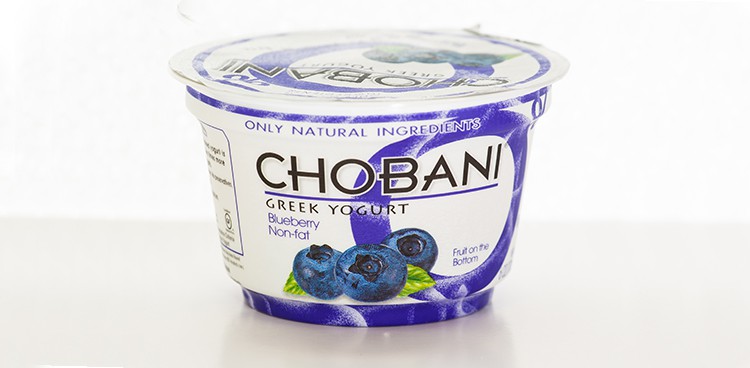
It looks like lobbying efforts on behalf of New York’s lucrative Greek yogurt industry are finally paying off in a big way. The USDA recently announced that Chobani will become a permanent fixture in the nation’s K–12 public school cafeterias.
Upstate New York’s dairy belt is home to Greek yogurt companies Fage, Muller Quaker, Alpina, and the industry leader, Chobani. In order to make Greek yogurt eligible for the federal school lunch program, Senators Schumer and Gillibrand, as well as the aforementioned wily lobbyists, came up with a strategy: namely, to get the dairy product declared as a “meat alternative” because of its high protein content (relative to regular yogurt). In 2013, Chobani started rolling off the conveyer belts and into school cafeterias in New York, Idaho, Arizona, and Tennessee as part of a one-month pilot program. Two hundred thousand pounds and $300,000 in yogurt later, the program was extended to eight more states the following year. And now, every public school child will get a hearty helping of the 0% version of the Greek yogurt with a patriotic choice of red, white, and blue flavors: strawberry, vanilla, and blueberry.
To put this Chobani coup into context, Greek yogurt has helped the Empire State take over as the number three dairy state in the nation. The ever-voracious market for Greek yogurt has been a boon to the state’s farmers and milk producers, and between 2011 and 2014, dairy manufacturing jobs in New York grew from 1,500 to 9,570. Chobani alone posted $1.3 billion in sales last year.
Although the USDA contract certainly sounds like a big score for the Greek yogurt company founded by Turkish-Kurdish immigrant Hamdi Ulukaya back in 2005 (the yogurt did not debut on the market until 2007), the company claims that supplying schools is not all that lucrative. As Chobani chief marketing officer Peter McGuiness told the Albany Times Union, “We did not put it through the lens of profit and loss, black and white, like a big food company would do. We looked at it as the right thing to do for kids in America.” Yeah, ’cause of course Chobani is all about the public interest. Money, who needs it?
As far as the dubious equivalency of yogurt and meat, we were curious how the nutritional values stack up. Exactly how much protein bang do you get for a Chobani buck? In a 5.3 ounce (150 gram) serving of Chobani fat free yogurt, we are talking 13-15 grams of protein depending on the flavor in question. For four ounces (113 grams) of 80/20 ground beef and 1 cup (140 grams) of diced roasted, chicken breast, an American child would get a comparatively whopping 19.3 grams and 43 grams of protein, respectively. And let’s not forget that, along with the protein in the serving of yogurt, they’ll also be getting anywhere from 13 to 15 grams of sugar. (The plain yogurt, at 4 grams, is much better in this department, but this isn’t one of the flavors contemplated for the schools; plus, I’m certain kids would run the other way rather than eat a flavorless non-fat yogurt.)
While the yogurt-meat alternative agruement isn’t as farcical as the pizza as vegetable fiasco, this is less than desirable given the endemic nature of the nation’s sugar addiction.
Photo Credit: “Photo of a container of Greek yogurt” by Darryl Brooks | Shutterstock



